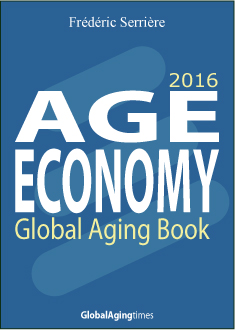Over the next twenty years, the population aged 65 and over is expected to grow from 48 million to 79 million. Meanwhile, the number of households headed by someone in that age group will increase by 66 percent to almost 50 million—with the result that by 2035, an astounding one out of three American households will be headed by someone aged 65 or older.
Older adults’ homes and living situations are keys to their quality of life and capacity to live independently. The expansion of the older population will increase the need for affordable, accessible housing that is well-connected to services well beyond what current supply can meet. In addition, the home is an increasingly important setting for the delivery of long-term care, a trend likely to grow over the next two decades as millions more seek to remain in their current dwellings while coping with disabilities and health challenges.
Over the next two decades, many older households will have the financial means to secure housing and supportive services suited to their needs as they age. The focus for these households should be on making informed choices about potential living situations and locations, investments in home modifi cations, and care—before physical or fi nancial needs become pressing.
Yet over the same period, millions of low-income older households will struggle to pay for appropriate housing and necessary supportive services. For these households, basic housing costs will drain resources needed to pay for home modifi cations or in-home services, and may force reductions in spending on critical needs like food and healthcare.
The nation is now at the beginning of a twenty-plus-year surge in the older population, and is thus at a critical point for putting in place the affordable housing options, accessibility features, and in-home care services that will be needed over the next two decades. Transportation and technologies to ensure people can remain engaged in their communities and access supportive services are also needed. While many older adults indicate that they prefer to age in their current residences, a wider array of housing types can offer safer, more affordable, and lower-maintenance homes within existing communities, improving housing situations without uprooting older adults from the places they have called home for years or even decades.
Growth in the older population will accelerate in the next 20 years
The next two decades will bring substantial growth in the number of older adults (defi ned here as those aged 65 or over). With the leading edge of the large baby boom generation (born 1946-1964) now passing age 70, the US Census projects the 65-and-over population will increase by more than 30 million people by 2035 to reach 79 million, with more than half that growth occurring in the next decade.
The 80-and-over population alone will double between 2015 and 2035 from 12 million to 24 million, with 70 percent of that growth occurring from 2025-2035, the decade during which the leading edge of the baby boomers passes age 80.
Overall, this growth will shift the age distribution of the US population so that by 2035, one in five people in the US will be aged 65 and over, up from one in seven today.
The older population will become more racially and ethnically diverse, though signifi cant shifts will not happen until today’s more diverse Generation X and millennials reach retirement age. Still, by 2035, the non-Hispanic white share of the older population will fall from 78 to 69 percent, with rising shares of non-Hispanic black, Hispanic, Asian, and other races fi lling out the remaining 31 percent. The share of foreign-born older adults is expected to increase from 13 to 19 percent over the next two decades.


